Armenia’s cultural landscape is dotted with remarkable historical sites, each offering a unique window into the country’s storied past. From the ancient Garni Temple‘s Greco-Roman architecture to the rock-carved Geghard Monastery, these destinations captivate visitors with their blend of architectural brilliance and spiritual significance. Alongside them, the symbolic Charents Arch and the panoramic views from Khor Virap provide a deeper understanding of Armenia’s resilience and national identity. Exploring these sites promises to unveil the multi-layered tapestry of the country’s heritage.
Key Points
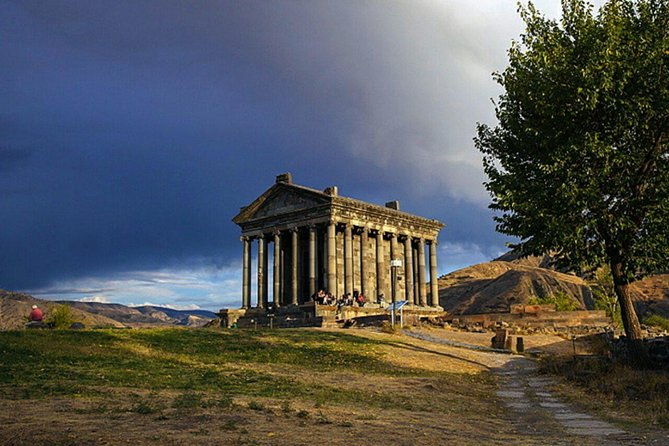
-
Garni’s Pagan Temple is Armenia’s only remaining pagan temple from the 1st century AD, featuring Greco-Roman architecture and honoring the sun god Mihr.
-
Geghard Monastery is a UNESCO World Heritage site with rock-carved architecture from the 4th century, showcasing the skill of medieval Armenian architects.
-
Charents Arch is a symbolic gateway honoring the Armenian poet Yeghishe Charents, representing the nation’s resilience and commitment to preserving cultural identity.
-
Khor Virap is a hilltop monastery offering breathtaking views of the iconic Mount Ararat, a significant national symbol of Armenia.
-
Armenia’s unique history as a crossroads between East and West has led to influences from ancient empires and the adoption of Christianity as the state religion.
Exploring Garni’s Pagan Temple
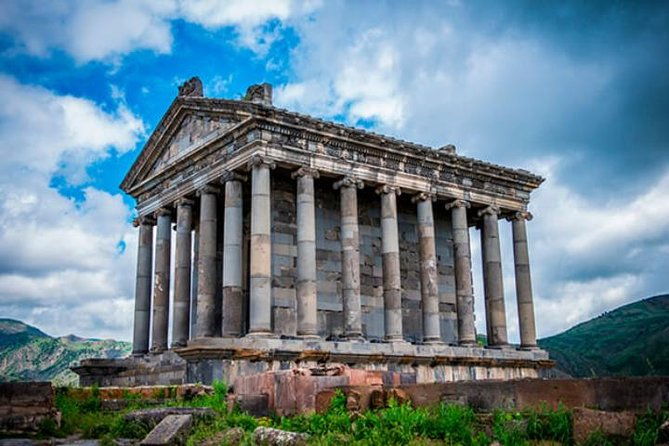
Why does Garni stand out as Armenia’s sole remaining pagan temple? Dating back to the 1st century AD, this Greco-Roman style temple is a unique relic of Armenia’s pre-Christian past.
Perched atop a dramatic cliff, the temple’s majestic columns and pediment evoke the grandeur of classical antiquity. Visitors can explore the temple’s inner sanctum, where ancient rituals were performed honoring the sun god Mihr.
Though Christianity later supplanted paganism, Garni endures as a captivating window into Armenia’s rich cultural heritage. Its remarkable preservation makes it a must-see stop on any tour of the country’s historic sites.
Looking for more options in Yerevan? We've reviewed plenty of other experiences.
Discovering the Rock-Carved Geghard Monastery
Nestled within a dramatic mountain landscape, the Geghard Monastery captivates visitors with its remarkable rock-carved architecture.
This UNESCO World Heritage site dates back to the 4th century, with additions made over the centuries.
Explore the main cathedral, carved directly into the mountainside, and the smaller chapels featuring intricate stone carvings.
Wander through the tranquil courtyards and underground chambers, marveling at the skill and dedication of the medieval Armenian architects and stonemasons.
The monastery’s serene atmosphere and unique blend of natural and man-made elements make it a must-see highlight of any Armenia tour.
The Symbolic Charents Arch

As one travels through the Armenian countryside, the Charents Arch stands as a symbolic gateway, a testament to the nation’s rich cultural heritage.
This monumental structure pays homage to the renowned Armenian poet Yeghishe Charents, whose works have left an indelible mark on the country’s literary landscape.
The arch’s striking design and placement serve as a powerful metaphor, representing:
- Armenia’s resilience in the face of adversity
- The enduring spirit of its people
- The nation’s unwavering commitment to preserving its cultural identity
- The transformative power of the arts
- The bridge between past, present, and future.
Panoramic Views From Khor Virap
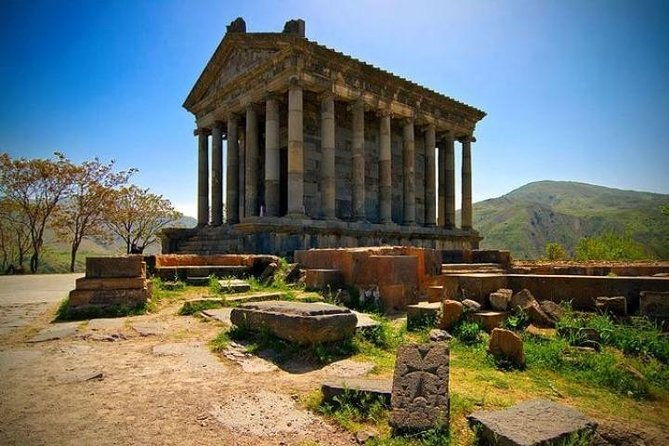
Towering above the Ararat plain, Khor Virap commands a breathtaking panorama.
The monastery’s hilltop location offers unparalleled views of the iconic, snow-capped peak of Mount Ararat, Armenia’s national symbol. Visitors can gaze upon this majestic mountain, which straddles the border with Turkey, and imagine the biblical story of Noah’s Ark resting atop its slopes.
The scene is truly awe-inspiring, with the vast, rolling countryside stretching out below. Khor Virap’s historic significance as the site of St. Gregory the Illuminator’s imprisonment only adds to the site’s profound sense of place, making it a must-see destination for any traveler to Armenia.
Understanding Armenia’s Unique History
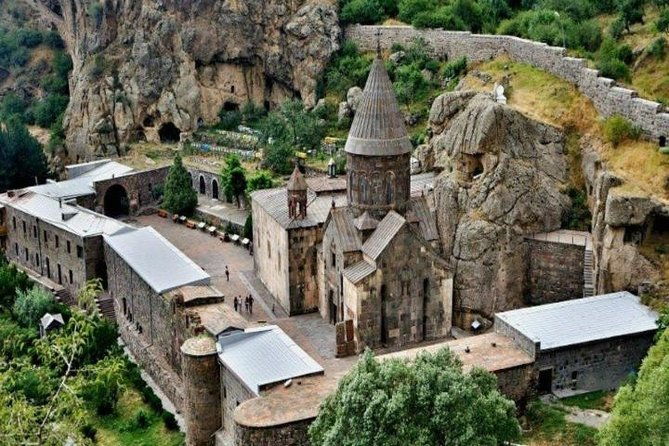
Armenia’s unique history is deeply rooted in its strategic location, serving as a crossroads between the East and West.
From the ancient empires of the Urartu and Seleucid dynasties to the adoption of Christianity as the state religion in the 4th century, Armenia’s past has been shaped by diverse cultural influences.
Key elements of its history include:
- Religious syncretism, blending Zoroastrianism, Paganism, and Christianity
- Architectural marvels like the Garni temple and Geghard monastery
- Resilience in the face of invasions by Persians, Byzantines, Arabs, and Ottomans
- Vibrant literary tradition and contributions to science, philosophy, and the arts
- Ongoing efforts to preserve its cultural identity and heritage.
- Private Tour: Khor Virap, Noravank, Winery, Birds Cave, Tatev
- PRIVATE TOUR: Saghmosavank, Alphabet Monument, Amberd Fortress
- Day Trip to Sevan, Tsaghkadzor, Fish Making Masterclass
- Private Tour to Khor Virap,Areni Winery,Noravank,Tatev Monastery
- Garni Temple and Geghard Monastery – Private Tour From Yerevan – 4 Hours
- Private Day Trip to Tatev Monastery and South Armenia
Savoring Local Cuisine and Traditions
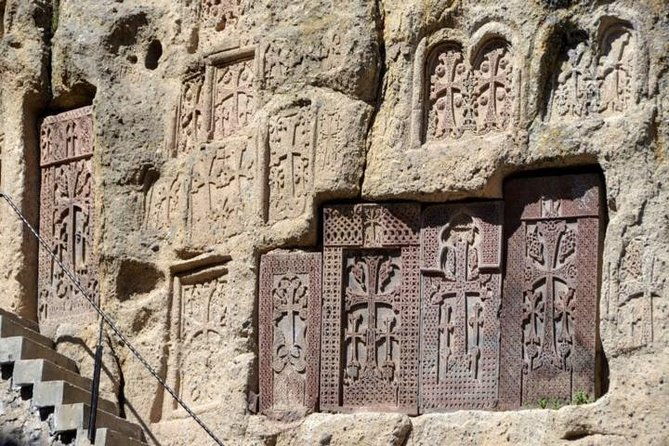
While exploring Armenia’s historical and architectural wonders, travelers often delight in savoring the country’s vibrant culinary traditions and local customs.
From hearty lentil stews to delicate dolma (stuffed grape leaves), Armenian cuisine reflects the nation’s agricultural heritage and diverse cultural influences.
Beyond the table, visitors can enjoy age-old rituals, such as the ancient art of "khatchkar" (cross-stone) carving or the joyous celebrations of the Vardavar water festival.
These enriching encounters allow travelers to connect with Armenia’s enduring spirit, leaving them with a deeper appreciation for the country’s living heritage.
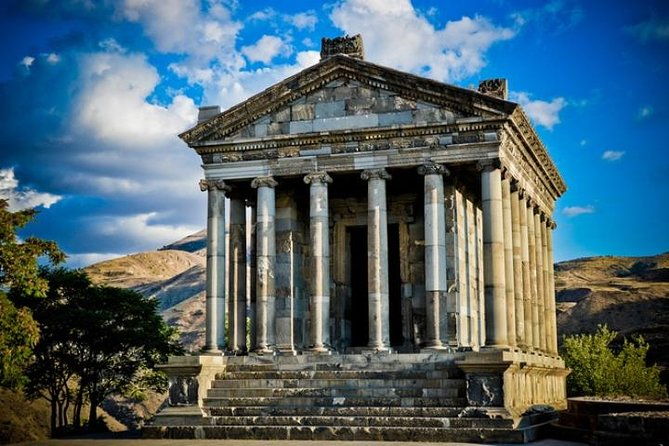
To make the most of this Armenia tour, navigating the transportation and logistics is crucial. The tour includes hotel pickup and drop-off, as well as air-conditioned transport, but it’s essential to consider a few key points:
-
Communicate preferences for stops and timing with drivers to personalize the experience.
-
Be prepared with digital guides or audio options to enhance understanding at the sites.
-
Expect occasional communication barriers with drivers who may have limited English proficiency.
-
Allow for flexibility, as itinerary adjustments can affect tour duration and site visits.
-
Embrace the unique cultural experiences, even if the logistics require some adaptability.
Maximizing Your Tour Experience
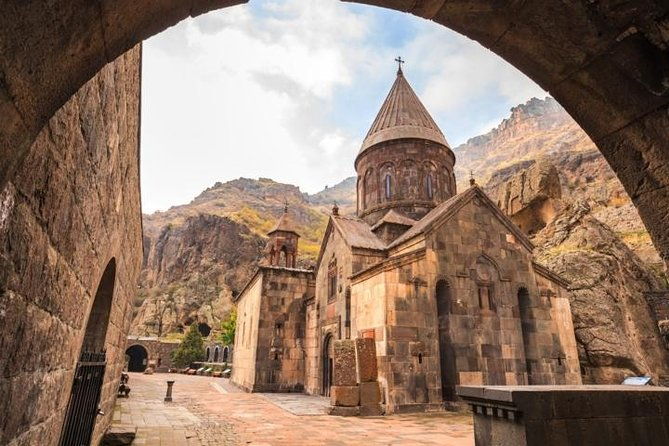
Although the Armenia tour offers a remarkable opportunity to explore the country’s rich history and cultural heritage, maximizing the experience requires a proactive approach.
Effective communication with the driver is key – discuss preferences for stops and timing to ensure a personalized itinerary. Leverage digital resources like audio guides to enhance understanding at sites, especially if opting for a driver-only service.
Be adaptable, as minor itinerary changes may occur. Most importantly, embrace the unique cultural experiences, from singing in churches to savoring local cuisine, to create truly memorable moments on this insightful journey.
Ask Away
What Is the Minimum Group Size for This Tour?
The minimum group size for this private tour from Yerevan is 1 person. The tour can accommodate up to 3 people per group, with pricing starting at $84.15 for the entire group.
Are There Any Additional Costs for Entrance Fees?
The tour includes entrance fees for Garni temple, so there are no additional costs for that site. However, fees for other attractions like Geghard monastery may not be covered and could incur extra charges.
Can We Customize the Itinerary to Visit Other Sites?
Yes, the tour can be customized to visit other sites. The provider offers a private tour, allowing travelers to personalize the itinerary according to their interests and preferences within the tour’s duration and pricing.
Is Photography Allowed at the Historical Sites?
Yes, photography is generally allowed at the historical sites on this tour. Visitors should check with their driver or guides about any specific restrictions, but capturing the stunning architecture and landscapes is encouraged to preserve the memories of the experience.
What Is the Dress Code for Visiting the Religious Sites?
When visiting religious sites in Armenia, it’s best to dress modestly. This usually means covering knees and shoulders. Visitors should avoid revealing or overly casual attire to show respect for the sacred spaces.
Final Words
Armenia’s rich cultural heritage is beautifully embodied in the sites of Garni, Geghard, Charents Arch, and Khor Virap. From the pagan temple of Garni to the rock-carved Geghard Monastery, the symbolic Charents Arch, and the breathtaking views of Khor Virap, these remarkable destinations offer a glimpse into the country’s unique history and traditions. Exploring these sites provides a truly immersive and enlightening experience for visitors.
More City Tours in Yerevan
More Tours in Yerevan
More Tour Reviews in Yerevan
- From Yerevan: 4-Day Private Guided Driving Tour
- Yerevan: Khor Virap, Garni, Geghard, Echmiadzin & Zvartnots
- Yerevan: Lake Sevan, Dilijan, & Wine/Brandy Factory Day Trip
- Epic Armenia: Sacred Sites, Ancient Caves & Fine Wines
- Private Tour: Tsaghkadzor, Kecharis Monastery
- Group Tour: Garni, Geghard, Lavash baking, Lake Sevan
Still browsing? Here are more Yerevan experiences we've covered recently
- We Rank The 14 Best Tours In Yerevan
- The Top 9 Walking Tours In Yerevan
- 14 Best City Tours In Yerevan (With Reviews & Prices)
- Which Yerevan Historical Tours To Choose? Our Best 6 Picks
- The 10 Most Popular Tours & Experiences In Yerevan
- 5 Top-Rated Yerevan Hiking And Trekking Tours
- From Yerevan: 4-Day Private Guided Driving Tour
- Yerevan: Khor Virap, Garni, Geghard, Echmiadzin & Zvartnots
- Yerevan: Lake Sevan, Dilijan, & Wine/Brandy Factory Day Trip
- Epic Armenia: Sacred Sites, Ancient Caves & Fine Wines
- Private Tour: Tsaghkadzor, Kecharis Monastery
- Group Tour: Garni, Geghard, Lavash baking, Lake Sevan
